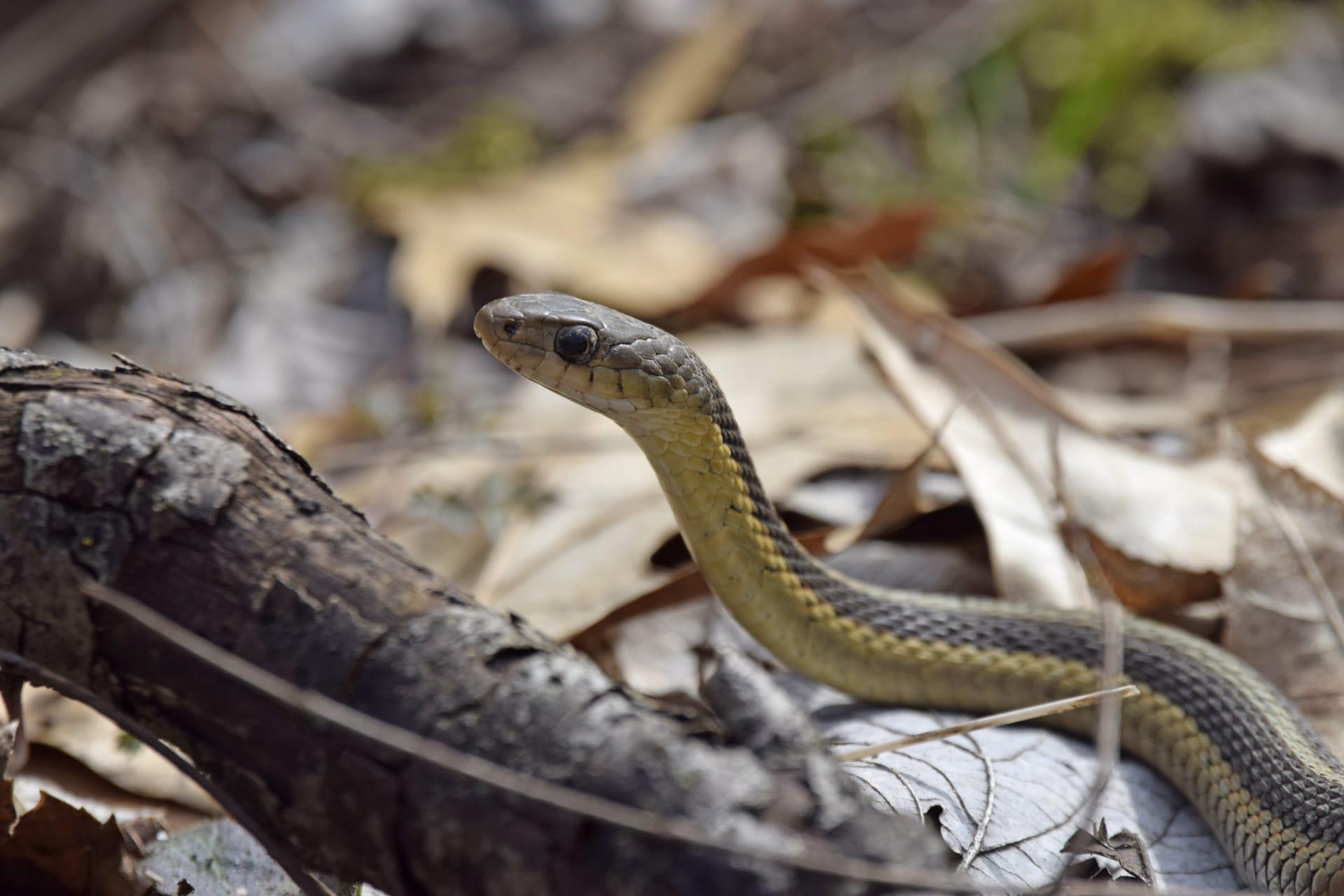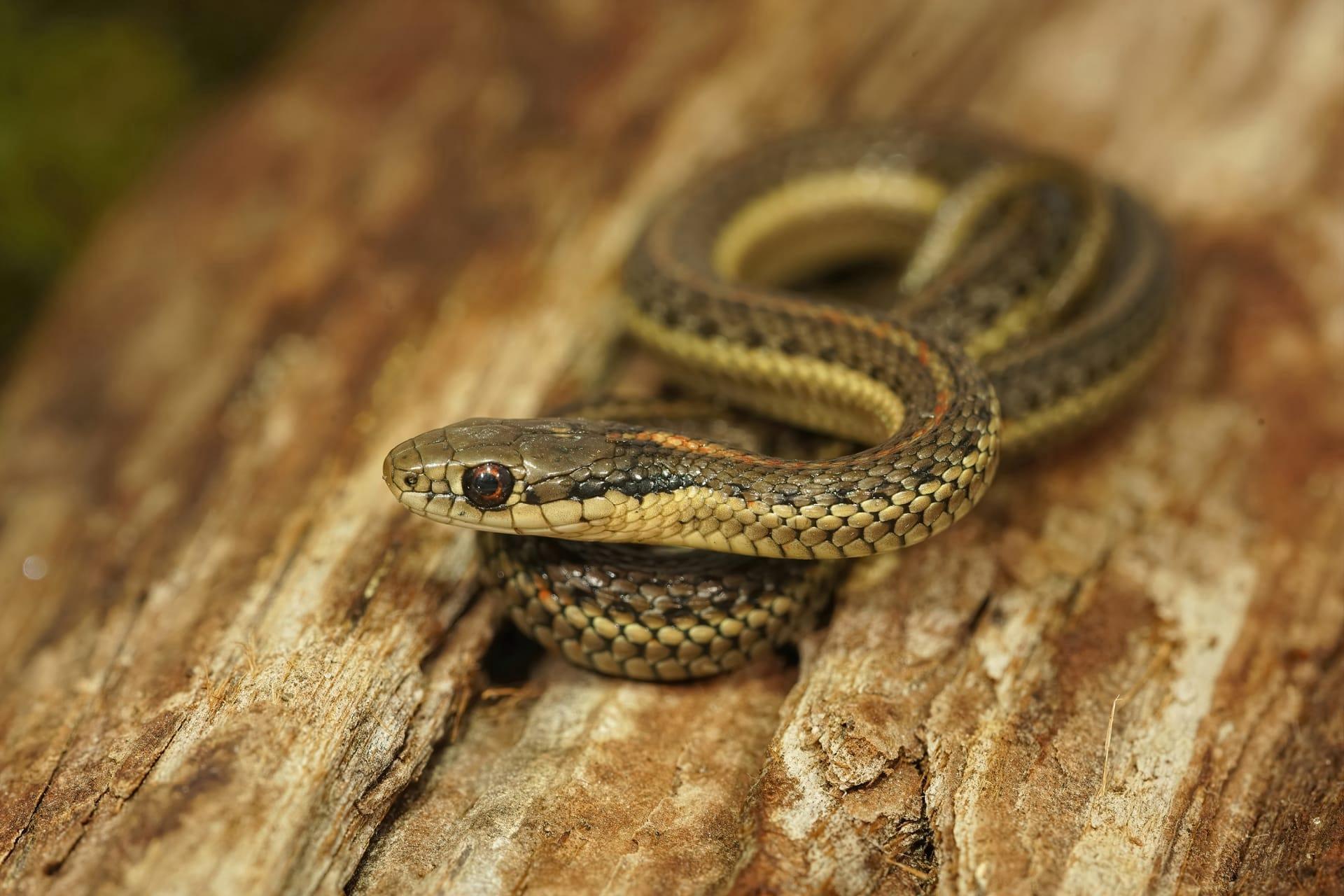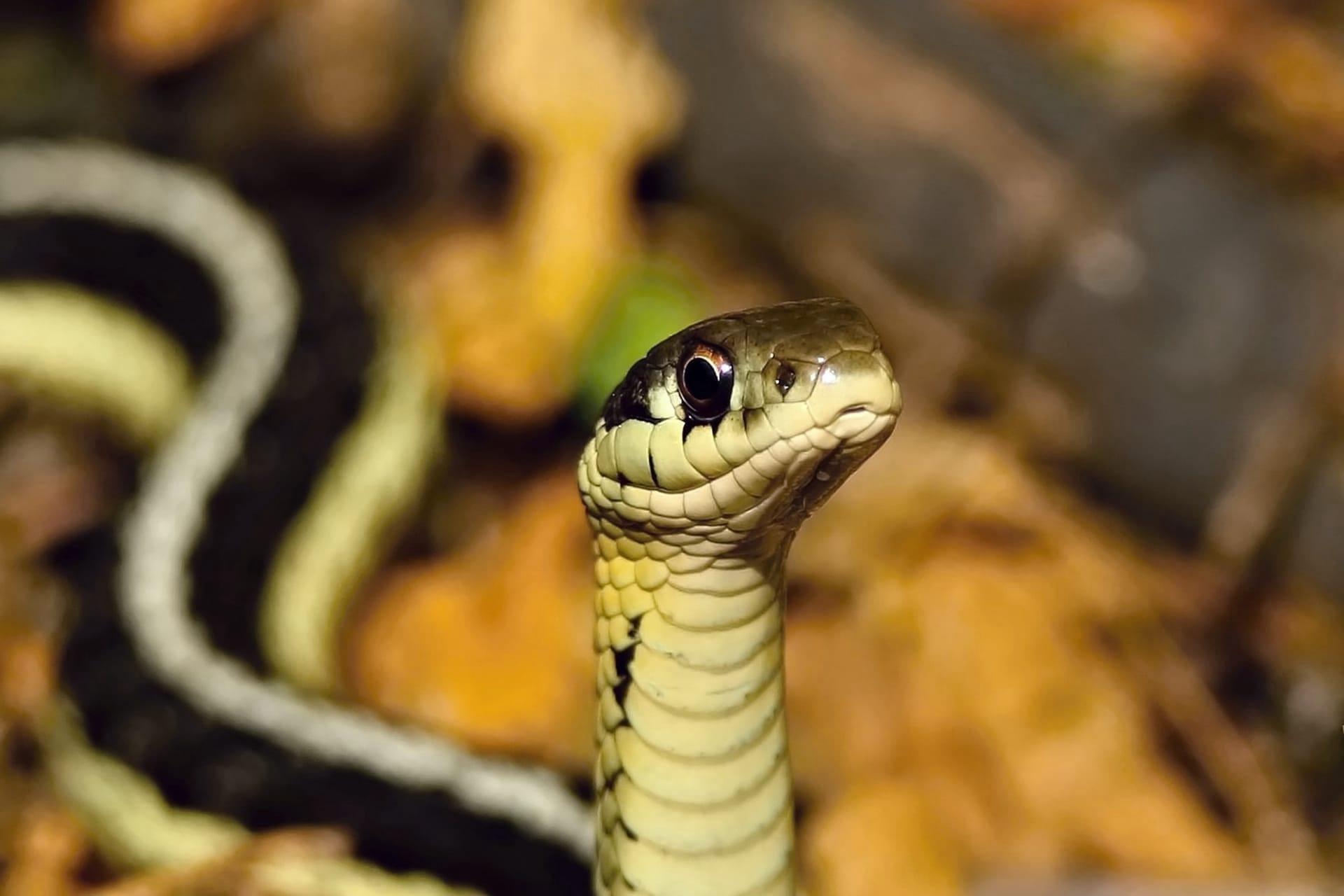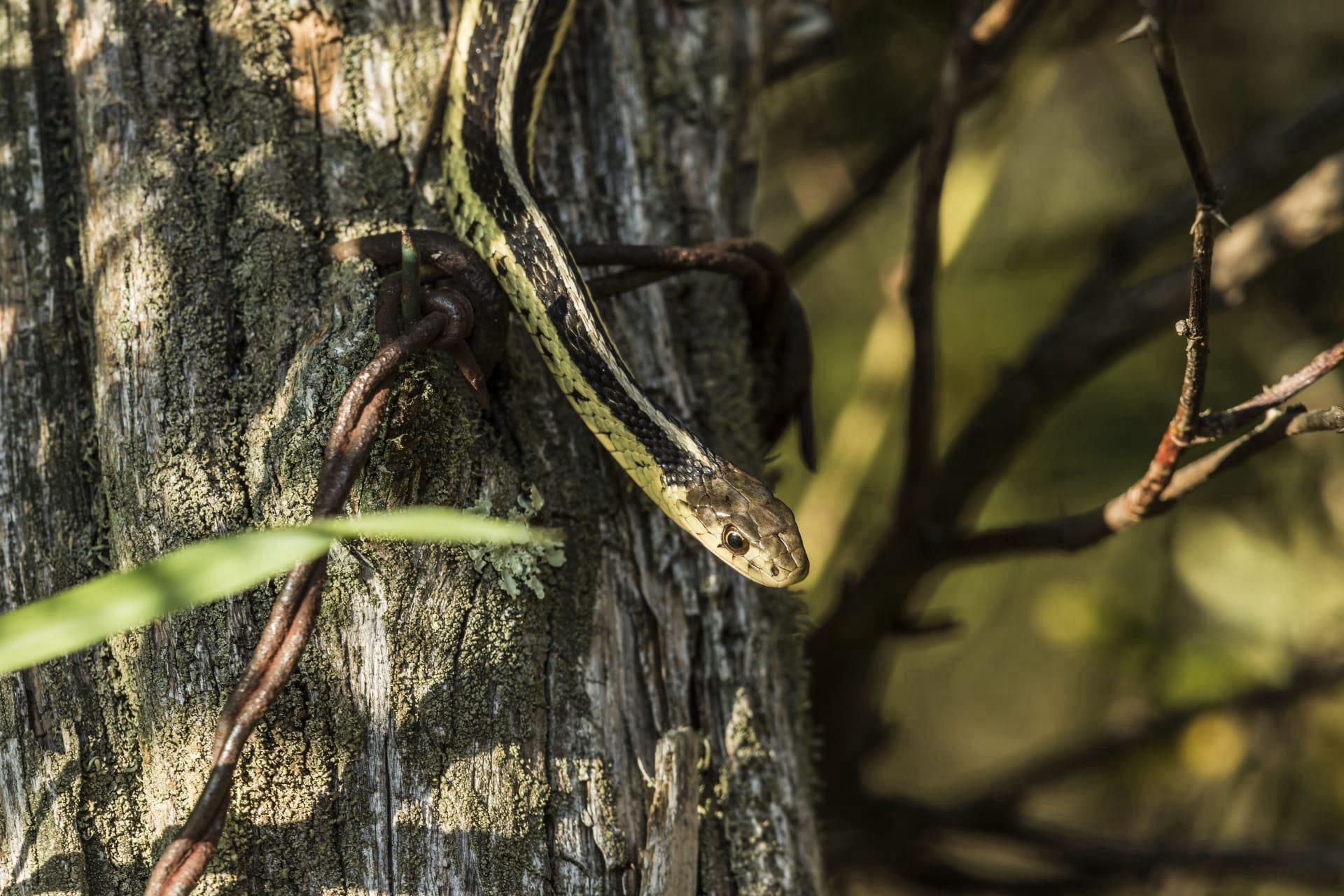Garter Snake
- Home /
- Mini Encyclopedia /
- Animal /
- Garter Snake
1
Garter snakes, belonging to the genus Thamnophis, are a group of non-venomous snakes found predominantly in North America. These species are characterized by their slender bodies, typically ranging from 18 to 54 inches in length, and their distinctive color patterns, often featuring stripes running longitudinally down their bodies. There are over 35 species in the Thamnophis genus, each with varying colorations and patterns, making them a diverse group within the snake family.
As for their distribution, garter snakes are widespread across North America, extending from Central America in the south to parts of Canada in the north. They are adaptable and can thrive in various habitats including forests, grasslands, wetlands, and even suburban areas. These snakes are particularly common in the United States, where they're found in almost every state. Their adaptability to different climates and environments contributes to their extensive distribution, making them one of the most common snake species in North America.

2
Question: Are garter snakes venomous?
Answer: A common misconception about garter snakes is that they are completely non-venomous. In reality, garter snakes do possess a mild venom. However, this venom is not harmful to humans and is primarily used for subduing small prey such as amphibians and rodents. Their fangs are located at the back of their mouths, and due to their small size and position, they are not effective for injecting venom into humans or large animals. As such, garter snakes are often considered harmless and are a popular choice for pet snake enthusiasts.

3
Garter snakes employ several survival strategies that make them adept at living in diverse environments. One key strategy is their varied diet; they are opportunistic feeders, consuming a wide range of prey including earthworms, amphibians, fish, small birds, and rodents. This dietary flexibility allows them to thrive in different habitats.
Another survival tactic is their method of reproduction. Most garter snakes are viviparous, meaning they give birth to live young instead of laying eggs. This reproductive strategy is advantageous in cooler climates, where eggs might not survive. Additionally, garter snakes have developed a unique adaptation to cold environments. They hibernate in communal dens, sometimes in large numbers, to maintain body temperature and survive harsh winter conditions.

4
In their ecosystems, garter snakes play a crucial role in maintaining balance. They act as predators, keeping the population of their prey, such as rodents and insects, in check. This predatory role helps prevent overpopulation of these species, which can lead to crop damage and the spread of diseases.
Garter snakes also serve as prey for larger animals like birds of prey, raccoons, and foxes. This position in the food chain helps support the biodiversity of their ecosystems. Their presence indicates a healthy, functioning ecosystem, as they contribute to the complex web of interactions among various species.

5
Film: "The Secret Life of Snakes" is a documentary produced in the United States in 2019. This film explores the fascinating world of snakes, including a segment dedicated to garter snakes. It provides insight into their behavior, habitat, and the challenges they face in the wild.
Book: "North American Snakes: A Photographic Guide," published in the United States in 2017 by author Samuel Orr, includes an extensive section on garter snakes. It provides detailed information on their identification, habitat, and behavior, accompanied by high-quality photographs.
Book: "The Snake's World: Exploring the Mysteries of Serpents," authored by Linda Greene and published in Canada in 2020, delves into the lives of various snake species, including a chapter on garter snakes. It covers their role in ecosystems, survival strategies, and interaction with humans, offering a comprehensive overview of these intriguing creatures.